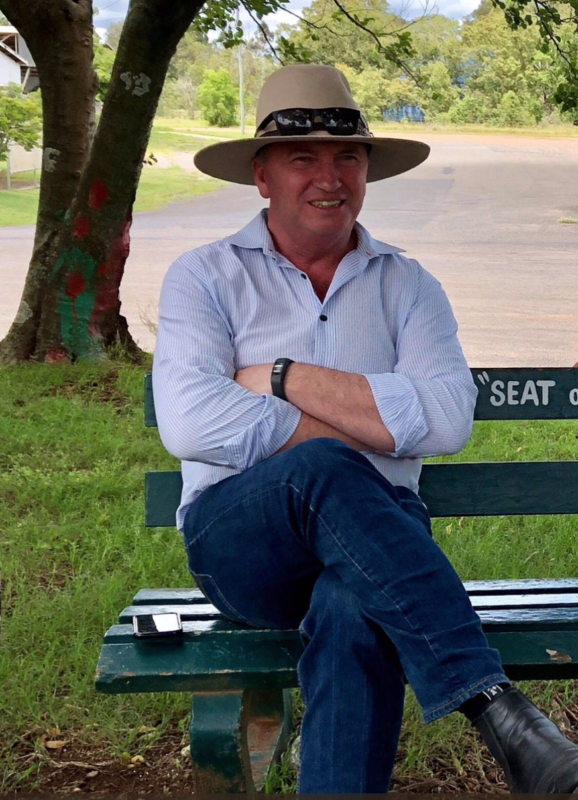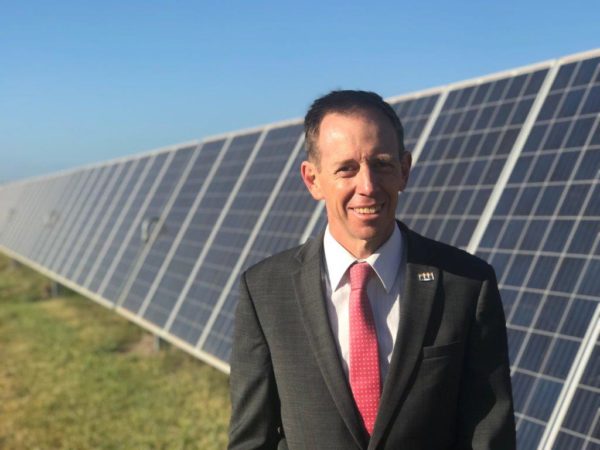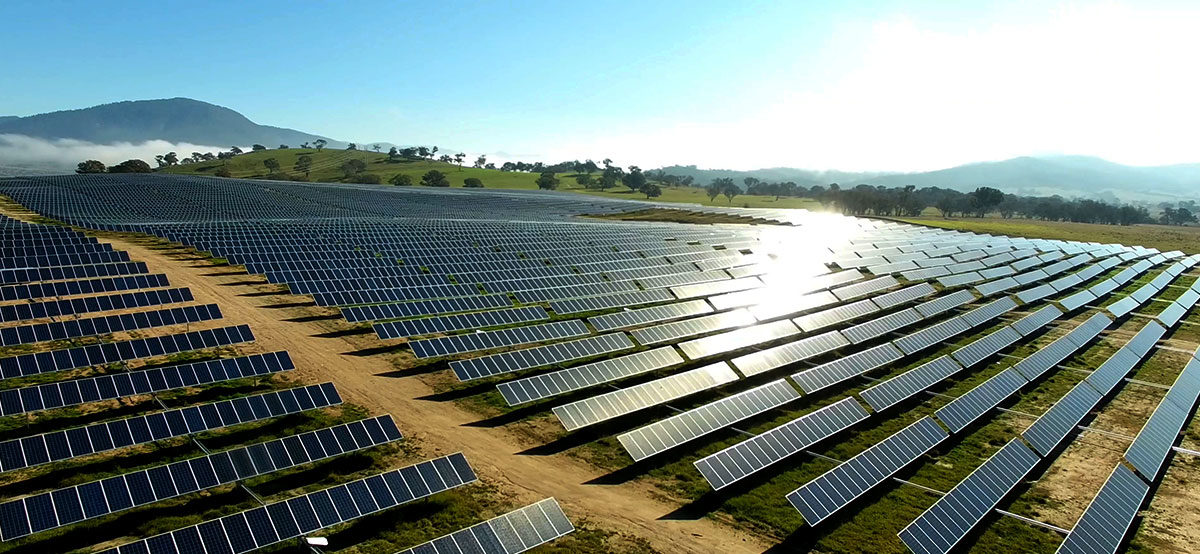In the lead up to any election, politicians will stand up for what they believe are the issues most besetting their electorates.
Late last week, in a public webinar hosted by the Smart Energy Council, and titled Smart Energy and the Climate Emergency, Shane Rattenbury, the Australian Capital Territory Minister for Climate Change & Sustainability talked about how the ACT Government is addressing what his constituents agree are energy-transition policies worth pursuing. The ACT has had stable government — a Greens-Labor power-sharing agreement since 2008 — and is on track to achieve 100% renewably powered energy for its electricity sector.
This morning on ABC Radio National, Federal National Party MP Barnaby Joyce, member for New England in New South Wales, came out in powerful support of six Queensland National MPs who have called for the Federal Government to underwrite a new coal-fired power plant in Central Queensland, in order to cut electricity bills and to promote jobs in the coal industry.
Queensland at a state level recently committed to a $2 billion Affordable Energy Plan, which, among other initiatives, hopes to unlock the potential of solar-power savings for tenants, who have been among the most disadvantaged in a state where more than 3.2 GW of rooftop solar has been installed by householders who mostly own their own homes.
Upwards of 30% of Queensland residences now offset their energy costs with rooftop solar. And the state has also seen 21 large-scale renewable energy projects deliver energy to the grid over the past two years. In February, Queensland Energy Minister Anthony Lynham calculated there were another $2.5 billion of clean energy projects in planning within the state.
Nationwide, Australian households and businesses are embracing solar power. In 2018, the annual Lowy Institute Poll found that 59% of Australians agree with the statement, “climate change is a serious and pressing problem. We should begin taking steps now even if this involves significant costs.” And 84% agree that “the government should focus on renewables, even if this means we may need to invest more in infrastructure to make the system more reliable”.
And yet the dichotomies of thought in Australian politics persist. The lead-up to the election gives us an opportunity to contrast two ends of the political spectrum — how two ministers, Barnaby Joyce and Shane Rattenbury represent their constituents.
Barnaby Joyce, Federal National Party MP, speaking to Radio National host Fran Kelly on the ABC this morning: We can’t live in… this sort of mystery fairyland where we’re saying to the world our major export is evil, and saying to ourselves we don’t know what in the hell we’re going to replace it with, maybe we’ll all just be poorer.
People in central Queensland have a different world view to the people of Melbourne… They want the jobs [that coal provides]. They want the capacity to keep themselves, especially, cool in summer, maybe warm in winter. They want their tradesmen to have a future.
Shane Rattenbury, the Australian Capital Territory Minister for Climate Change & Sustainability, speaking on the Smart Energy Council’s webinar, Smart Energy and the Climate Emergency, on 7 March 2019: Here in the ACT, we’ve just experienced our hottest summer ever. January 2019 was the hottest January ever recorded, and it wasn’t just a little bit hotter, it was 6.3 degrees Celsius above the long-term average, at an average of 34.5 degrees, so it was an extraordinary experience in terms of seeing the fingerprints of climate change, and for the first time ever we recorded four days in a row above 40 degrees Celsius.
From a policy perspective, the ACT has got really clear goals in response to that. You’d be aware of our target to be 100% renewable energy by 2020. I’m happy to assure you that we’re well on track for that, with projects such as the Hornsdale Wind Farm due to come onstream later this year. We will get to our target in time for that 2020 deadline.
As part of our broader goal, we have now revised our zero net emissions target. We want to be zero net emissions by 2045. That continues to be one of the most ambitious agendas in the world. We’ve also set ourselves interim targets of 2025, 2030 and 2040, and the reason we’ve done that is so that we can both check that we’re on track, but also hold ourselves accountable.

Image: Barnaby Joyce
Barnaby Joyce on Radio National: First of all, solar and wind, what inspired the development of that was the Renewable Energy Credit, which means one of your listeners is paying for the other of your listener’s power bills. It’s very simple. It is an inspired incentive. It’s a little bit like the tulip economy back when apparently tulips were worth a lot of money. It is not tested in a perfect market, open market conditions. It is tested in a subsidised market, at a differentiation to where the coal market has to pay. We have our targets, emission reductions targets — 26-28% by 2030 and I think it was 5% by 2020.
… How do they actually know what your carbon-emission position in Australia is now? It is a self-assessment process by the major emitters, and then it’s compiled by the government. So basically, it’s a proposition about a supposition that if a magical number is correct we all feel happy, and if the magical number is incorrect we all feel sad.
Shane Rattenbury on the Smart Energy Council webinar: I think Australia’s lack of a clear and ambitious target is problematic. And when I say a clear target, there is a number out there. We have our Paris commitment, but I think the observations we’ve seen from the Prime Minister about Australia easily meeting it at a canter actually is a falsity. We may get there in the electricity sector courtesy of the work that’s already embedded in the renewables work that’s already in the pipeline, but certainly in the agriculture sector, in the transport sector, getting the sort of cuts we need to meet our Paris target is going to be very politically challenging as well as policy challenging.
… Politically I think we need a stronger national target. And we need no new coal.
Barnaby Joyce on Radio National: I want us to build one [a new coal-fired power station]. I don’t want to have the how-many-angels-can-dance-on-the-head-of-a-pin argument at the moment, because people are suffering, because people are losing their jobs because of it, and because it makes our nation look like complete hypocrites. Our biggest export and in our internal debate we’re saying it is evil or something. It’s just ridiculous.
Shane Rattenbury on the Smart Energy Council webinar: One of the things we [the ACT Government] are about to do is set a new energy policy through to 2025, and some people say, “Why do you need to do that, given you have the 100% renewables target in place?”
Well, I think there are a couple of things there. One is we’ll need to maintain that 100% target. That will mean we’ll need to continue to do energy efficiency. Certainly with population growth, I think we’ll also need to procure more electricity supply at some point in time, to continue to maintain that 100% target. We need to think very carefully about what role storage is going to play in our grid, going forward.
We’ve got a battery rollout program targeting 5,000 households, so 36 MW of storage, but that will continue to be an issue we need to think about. We’ll need to think about how we update the grid as we go forward. There are pressure points in the grid at the moment, and we’ll need to think about how to address them. How we continue to make the grid “smart” as opposed to its current status. And we also need to think about how electric vehicles are going to play a role in that grid as we go forward.

Image: Shane Rattenbury
Barnaby Joyce on Radio National: If you want to completely crash this economy, keep driving up your power prices. You now have the dearest power prices in the OECD, you used to have the cheapest power prices in the OECD. Once upon a time you used to have baseload coal-fired power, now you don’t.
The more free power we use the dearer our power prices get, and the person in the weatherboard line who can’t afford their power, they are the victim of all this.
Shane Rattenbury on the Smart Energy Council webinar: For the ACT the nature of the challenge changes once we get to 2020. Electricity emissions have been an enormous part of our emissions profile historically. After 2020, once we’ve taken all those electricity emissions out of the system, around 60% of our emissions will come from the transport sector, another 22% or so will come from natural gas usage, and the remainder come from land clearing, industrial uses, waste generation and the like. But you can those two big sectors sit there as real challenges for us.
We’re in a slightly different space to other jurisdictions because we’ve been an early mover. That means that we need to continue to tackle issues that at the moment other jurisdictions are not really starting to tackle.
Barnaby Joyce on Radio National: I don’t think Australia by itself, especially by reason of 76 out of 100 people voting for something in Canberra is going to do one damn thing to the climate. There is no-one disputing that.
Shane Rattenbury on the Smart Energy Council webinar: We feel that we have managed to, as a small jurisdiction, hopefully be a glimmer of hope in an otherwise difficult national debate at times, and be able to roll out policies that others can copy over the coming years as we all seek to fulfil the role we have to play, in Australia, to be good global citizens and reduce our emissions.
This content is protected by copyright and may not be reused. If you want to cooperate with us and would like to reuse some of our content, please contact: editors@pv-magazine.com.









By submitting this form you agree to pv magazine using your data for the purposes of publishing your comment.
Your personal data will only be disclosed or otherwise transmitted to third parties for the purposes of spam filtering or if this is necessary for technical maintenance of the website. Any other transfer to third parties will not take place unless this is justified on the basis of applicable data protection regulations or if pv magazine is legally obliged to do so.
You may revoke this consent at any time with effect for the future, in which case your personal data will be deleted immediately. Otherwise, your data will be deleted if pv magazine has processed your request or the purpose of data storage is fulfilled.
Further information on data privacy can be found in our Data Protection Policy.